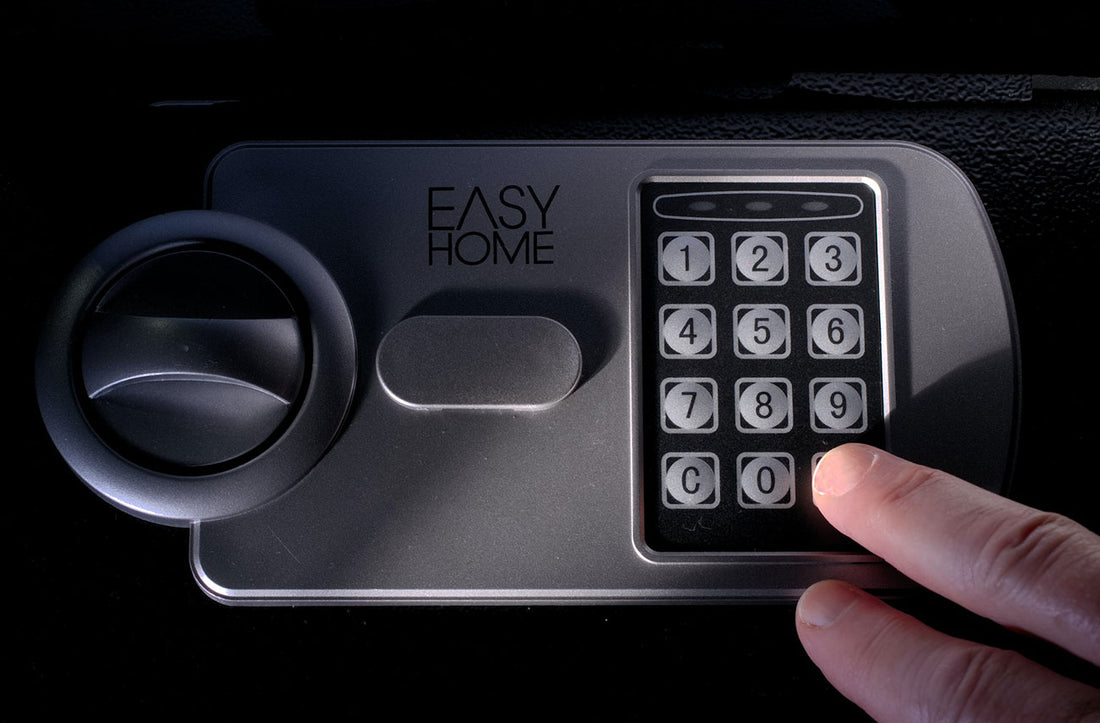Do you have questions about investing in bullion? At Global Bullion Suppliers, we want to make sure investors who work with us have all of the answers they need. Bullion can be a critical addition to any investment portfolio, adding diversification and security against market volatility. But if gold and silver bullion are going to provide you with peace of mind about your savings, you need to know that your bullion is safe and secure.
One of the questions to ask a bullion dealer that we hear frequently is about storage options. New investors want to know where they can store gold and silver bullion with the confidence that it will be safe. These are the five most secure bullion storage options most widely available to everyday investors.
The 5 Most Secure Bullion Storage Options
Before you buy gold bullion, you should have a storage plan in place. These are the five most secure bullion storage options you have.
#1 Home Safe
For most bullion investors, the number one storage option is a home safe. A home safe gives you direct, unfettered access to your gold and silver. You don’t have to go anywhere off-site or put your trust in anyone else. You can grab it in a hurry, and you always know where it is.
There are a few things you should know about buying the right home safe. First, make sure you choose the right size. You don’t need much space for a couple of 1 oz. gold bars, but an equal-in-dollars amount of silver takes up a lot of room. Plan ahead and buy the safe that will fit your investment future.
Secondly, you’ll have to choose between a combination safe and a keypad. Combination locks don’t require a battery, but if you struggle to read the numbers on the dial or your hands are shaky, a digital lock can be a lot easier.
Finally, make sure you find a good place to hide silver and gold, even if it’s locked away in a safe. Discretion is an invaluable tool for keeping your bullion safe, and that means limiting how many people know about it. Pick one family member or loved one who you trust. Tell them the location and the combination, just in case something happens to you.
#2 Safe Deposit Box
If you’re concerned about the risk that home storage could lead to theft, one option you have is a safe deposit box at the bank. The bank has considerably better security than most people’s homes. A safe deposit box is a relatively affordable option, but there are some important downsides to consider.
Precious metals stored in a safe deposit box are not insured by the bank. You will still need to get your own insurance for it. While bank security is more robust than your home, a bank is also a bigger target for professional thieves.
Space restrictions can also be an issue. Safe deposit boxes can quickly run out of room as you buy more gold and silver.

#3 Pooled Vault Facilities
Another off-site storage solution is a vault specifically designed for storing bullion. Pooled vault facilities are where all bullion is kept in a single vault. Typically, the facility certifies that you own a certain quantity of gold, and if you want to claim your gold, an employee withdraws the appropriate quantity in any form.
Technically, if you invest with a vault, you do not actually own the bullion. Instead, you’re considered a creditor, and you can make a claim on the gold. If the facility, which can include a bank or another party, goes bankrupt, you may not be able to retrieve your investment. You also have to trust that the facility actually keeps a physical inventory large enough to satisfy all of its clients.
On the plus side, pooled vault facilities are one of the more affordable options for storing gold bullion. There are some significant drawbacks, but ultimately it comes down to how much you trust the facility that provides it. Many banks provide pooled storage facilities to their customers interested in investing in bullion, though you also have to purchase the bullion from that bank, usually at a higher price than what gold and silver bullion dealers offer.
#4 Allocated Vault Storage
Another type of vault storage is an allocated vault. This is a great middle ground between pooled storage and segregated vault storage, often available at a lower cost but with some more certainty and confidence than you get with pooled vault facilities.
When you store your bullion in an allocated vault, the custodian records the amount and the type of bullion that you place into it. Gold deposits are still stored commonly, but when you decide to withdraw your gold, you will get the exact same type that you placed into storage, although not necessarily the exact same gold.
For example, let’s say you had five 1 oz. Canadian Gold Maple Leaf coins and put them in allocated storage. When you decide to withdraw your gold, the custodian will give you five 1 oz. Canadian Gold Maple Leaf coins, but because that’s a fairly common bullion product, you would not necessarily receive the exact same coins.
Ideally, allocated vault storage should be offered by an independent third party that is not affiliated with a bullion dealer. You want to be able to source gold and silver from your own trusted source for bullion.
If you’re hoping to invest in coins that will gain collectible value in the future, allocated vault storage is not the best option, and you will want to look at home storage or a segregated vault.
#5 Segregated Vault Storage
The third and final type of vault storage can give you more peace of mind than pooled or allocated storage, though it can also be the most expensive type of storage.
When you use segregated storage, your bullion is kept separately. Usually, it will be logged, sealed in a security wrap, and then placed in a location with a tag identifying it as yours. You get paperwork certifying that you own it, and when you withdraw it, you get the exact same bullion that you placed in segregated storage.
Segregated storage requires more vault space than vaults that use common storage. Knowing that your bullion is stored separately comes at a premium, and there may also be a minimum deposit required.
If you have numismatic coins that have a value greater than their bullion content, segregated storage is the only option besides keeping it in a home safe or a personal safe deposit box.

Is Your Gold Safe in a Fire?
If you choose to store your bullion in a home safe, you also need to consider insurance. Even the world’s sturdiest home safe can’t protect your bullion from someone learning the passcode. Theft isn’t the only risk your bullion faces, either; it can also be vulnerable to house fires and natural disasters.
A typical house fire is not likely to reach temperatures high enough to actually melt gold or silver bars or coins. Both of these metals have a much higher melting point than what most structural fires reach.
However, there are other concerns. The packaging you store your bullion in can melt and damage the exterior, and it can be difficult to even find your bullion in the ash after a total loss. Burned construction materials and furniture can be highly toxic, and sifting through it all can be dangerous.
A fire-resistant safe can help improve your chances of recovering bullion after a house fire, but it can still have soot damage. Bullion that has survived a fire may need to be recast or reminted, meaning it may not sell for a premium price.
How to Get Insurance for Gold and Silver Bullion
Worried about theft, fire, or other natural disasters leading to the loss of your most valuable precious metals? When you choose to store your bullion at home, you should look into getting the right insurance coverage for it. Your home insurance policy likely won’t be enough. Typical homeowners insurance limits how much it will cover valuables like gold.
Even if you buy extra coverage, it’s common to face limits that don’t exceed $5,000 for all of your precious metals. This can be enough for an extensive jewellery collection, but when the value of gold is around $2,000 per ounce, it doesn’t take much to exceed coverage limits.
Fortunately, there are special policies designed to protect bullion investments. Find out more about specie coverage for individual investors. Specie coverage is typically used by mining companies, financial institutions, transporters, storage facilities, and refineries, but it can also be used for individuals.
Bullion is meant to be a kind of insurance for your broader portfolio. Make sure it’s protected from physical loss with an appropriate insurance policy. If you can’t find a policy that will protect your gold and silver at home, consider out-of-home storage facilities that can offer you adequate insurance.
Why Bullion Investors Should Calculate Storage Costs
Successful investing means getting a satisfactory return. When you calculate your ROI, you not only have to consider the initial cost of the investment but any carrying costs that come with it. That includes costs like insurance and storage.
Gold and silver bullion can be reliable ways to maintain your wealth, but you do want to make sure that you have a way of controlling your storage costs. One of the most affordable options at your disposal is likely going to be a home safe, but don’t forget to update your home insurance.
Individual investors will want to consider their own costs, risks, and comfort levels with the different types of storage available. Different priorities can make it readily apparent which storage solution is best for you. If you value quick and unrestricted access to your bullion, a home safe is likely going to be your best bet. If you’re not so concerned about getting back the exact products that you deposit, and you just want to include physical bullion in your portfolio, pooled or allocated storage can be sensible solutions.

